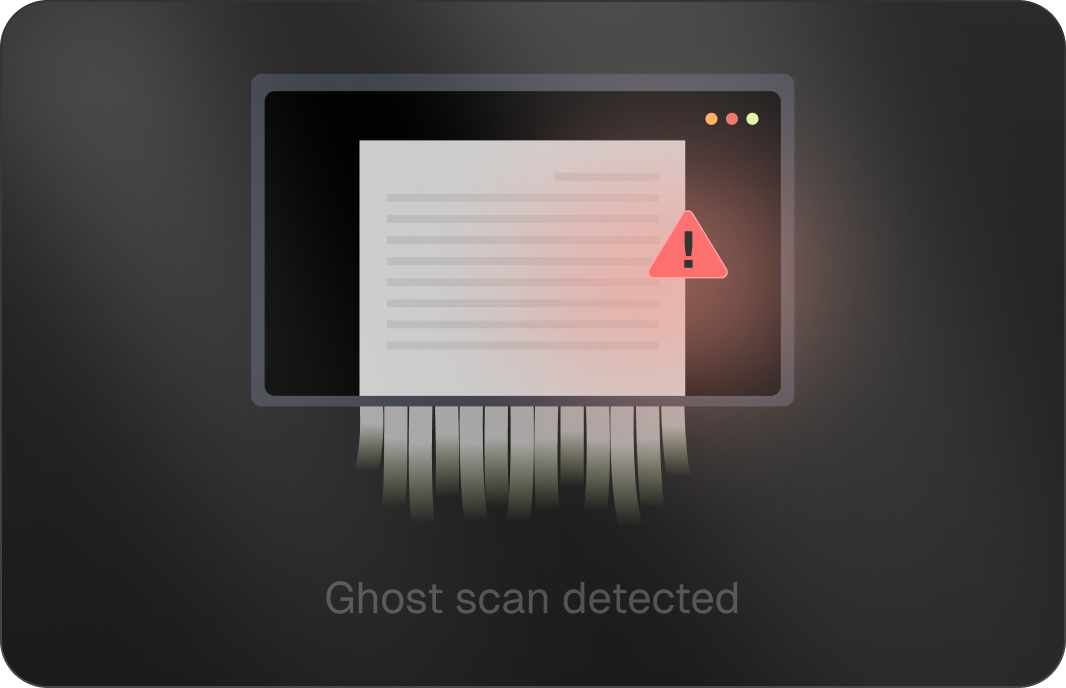Ghost Scans: Haunting Patient Care and Hospital Revenue

How invisible POCUS exams impact clinical and financial performance, and where AI can help
Every day, clinicians across hospitals and clinics perform point-of-care ultrasound (POCUS) exams that never make it into the electronic medical record. These “ghost scans” or “phantom scans” - real exams with real findings that go undocumented - quietly drain hospital revenue, reduce data visibility, and leave gaps in patient care.
What Leads to Ghost Scans?
Ghost scans aren’t caused by carelessness - they’re a byproduct of everyday workflow realities:
- Confidence gaps: Clinicians may hesitate to save or report scans if they’re unsure about image quality or interpretation.
- Unclear protocols: Some departments lack clarity on who owns POCUS documentation or whether certain studies “count.”
- Fragmented workflows: Completing a scan, attaching images, and coding CPT/ICD-10 details can take multiple steps across disconnected systems.
- Technical barriers: When ultrasound machines, PACS, and EMRs don’t talk to each other, studies can vanish in the process.
Studies suggest the problem is widespread. In cardiac arrest and trauma resuscitations, 70–86% of scans were undocumented [POCUS Journal, 2023]. Another report found that up to 48% of POCUS exams lacked any record [JUM, 2025].
The Real Cost of Ghost Scans
Every undocumented exam represents lost insight and lost revenue. GE Healthcare estimates that 77% of ED ultrasound scans go unbilled, amounting to millions in missed reimbursement opportunities. Beyond finances, undocumented scans can mean duplicated imaging, fragmented records, and missed opportunities for quality assurance.
How AI Can Help Bring Ghost Scans to Light
AI-based diagnostics and workflows are helping hospitals eliminate ghost scans by making POCUS documentation effortless:
- Guided image capture helps clinicians gain confidence and acquire diagnostic-quality views.
- AI interpretation support standardizes and validates findings in real time.
- Automated scan-to-report flow creates structured, billable reports (including CPT/ICD-10 codes) right at the bedside.
- Seamless EMR integration ensures every scan and every dollar is captured.
Why It Matters Most for Rural Hospitals and Specialty Clinics
For rural hospitals, critical access facilities, and private specialty clinics, ghost scans represent more than just a revenue leak - they threaten long-term sustainability. These organizations often operate with limited staff, minimal IT infrastructure, and thin financial margins. A single unbilled ultrasound may seem minor, but multiplied across hundreds of studies a year, it can translate into tens or hundreds of thousands of dollars in missed reimbursement.
In many of these settings, POCUS isn’t just a convenience - it’s the only imaging modality readily available. Undocumented scans mean lost diagnostic data that could improve continuity of care, guide transfers, and support clinical decision-making.
By adopting AI-powered, fully integrated tools, smaller institutions can achieve the same level of clinical rigor, compliance, and financial performance as large academic centers, without adding administrative burden.
This Halloween, it’s time to exorcise ghost scans for good by turning invisible work into visible impact.
